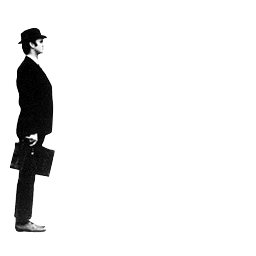-
Posts
6466 -
Joined
-
Last visited
Content Type
Profiles
Forums
Store
Downloads
Recruiting - 2020
2019-2020 Football Season
Football
Entertainment
Sports
News and Business
Cloak Room
Transfer Portal
Recruiting
Events
Posts posted by Foosters
-
-
Sorry about the gullet tumor, prez.
-
1 hour ago, Hank Chinaski said:
Right. The Oilers left Houston when I was in college, so the Texans never did it for me because they began when I was an adult. I don't really care about them one way or another.
For people born anytime after the late-90s...the Texans are no different than any other pro team.
Same. I tried to get into the Texans. Didn't take. Kinda like trying to adopt a European soccer team as an adult. Yeah, you can say you're a fan, you can buy the shit, and you can watch the games, but it all seems so forced.
-
 1
1
-
 1
1
-
-
This is the content I'm alive for.
-
 1
1
-
-
3 minutes ago, Ghost of LL said:
Yeah, but apparently young associates need to be enticed with a couch.
I blame their helicopter parents.
-
 1
1
-
-
5 minutes ago, JesusSweatDuck said:
Would you like me to screenshot the DMs? Little bitch

-
 1
1
-
 2
2
-
-
12 minutes ago, MrBig said:
This plane is back at it today while Shelley is in Sarasota. It’s happening.
https://flightaware.com/live/flight/N383SS/history/20201228/1500Z/KCMH/KEDC

-
 1
1
-
-
Guy calls everyone fucking idiots.
Guy gets neg repped.
Guy complains.
Tale as old as time.
-
 6
6
-
 2
2
-
-
49 minutes ago, workswithseed said:
Oh, I'm ideological. I just don't think you've thought of it that way. Republicans have been saying "Open up everything," from the start, but California now have been disregarding the rules. I think cause they're tired, and have seen hypocrisy from people they've believed that they could trust.
I'm just happy we can finally agree that the regulations were working to mitigate the spread, and it was only after the weary citizens of CA gave up and followed the GOP model that things spiraled out of control.
-
 3
3
-
 1
1
-
-
Just now, workswithseed said:
You're being too idealogical to even see that to be the case. People laugh at idiots and don't listen to them
So through your non-ideological lense, you perceive the greater political damage to have been done by hypocritical dems, as opposed to the entire GOP because "people think they are idiots and don't listen to them."
Is that your position?
-
 1
1
-
-
10 minutes ago, StruggleBus said:
Why do we need 5g anyway? I life has been great with LTE and I don't want to change that.

-
 2
2
-
-
- Popular Post
- Popular Post
Just now, Js1 said:In conservative fantasy land, that's all the cabal does. Ignore the posts that show otherwise.
Certain Dem politicians have done real harm by flouting the rules they insist are necessary to save lives. Those actions pale in comparison to the "other side" ENCOURAGING people to: not wear masks, gather in groups without masks, and "rise up" against local govt regulations intended to depress the virus. But, because @workswithseedis a disingenuous troll, he's only outraged at democratic hypocrisy, not the GOP's intentional plan to spread the virus.
-
 4
4
-
 6
6
-
1 hour ago, workswithseed said:
Still doesn't answer how SoCal is under such pressure.
QuoteThe dire situation has prompted confusion and dismay among Angelenos, many of whom are wondering whether their sacrifices over the past nine months have been for naught. L.A. County was an early adopter of masks, quickly instituted stay-at-home orders in March and November and, until this point, has kept its rate of coronavirus cases and COVID-19 deaths relatively low.
So what went wrong?
Interviews with 31 epidemiologists, health experts and public officials offer clues: L.A. was far more vulnerable to an extreme crisis than nearly anywhere else in the nation.
The trifecta of fatigue, winter weather and holiday travel that has led to more coronavirus transmission across the country hit here, too — and became the match that lit the tinderbox.
The popular image of L.A. — hillside mansions, urban sprawl and drivers cocooned in their cars — belies the gritty reality. L.A. County, home to more than 10 million people, suffers from high rates of poverty and homelessness, huge numbers of essential workers and some of the densest neighborhoods in the nation.
“There is no city as large and complex as L.A. The closest might be New York. And we saw what happened in New York,” said Dr. Kirsten Bibbins-Domingo, an epidemiologist at UC San Francisco.
Experts also pin L.A.’s problems on rules that can appear inconsistent or arbitrary, as well as a confusing patchwork of policies across Southern California. Additionally, the county is investigating whether a more contagious strain of the virus, circulating in the United Kingdom, could be partly to blame.
L.A. for the most part has taken the right steps, according to epidemiologists, and with a bit of good luck, managed to keep a crisis at bay for months.
“Now, some of that luck has run out,” Garcetti said.
November brought a surge
A surge in coronavirus cases that began in early November put L.A. County officials on watch.
By Thanksgiving week, 4,000 people were testing positive each day, at the time a record for the county. L.A. County Public Health Director Barbara Ferrer thought the numbers had likely reached their peak.
Then Thanksgiving hit.
“We realized, ‘Oh, my God. We’ve got everyone traveling, like hundreds of thousands of people are traveling,’” she said in an interview last week. “We at that point got really scared, because we just sort of knew in our core that we were headed to a surge on top of a surge.”
L.A. County now averages 14,000 new coronavirus cases a day.
The coronavirus took off throughout California in November, the beginning of a spike that had been predicted months prior. The progression mirrored that of the 1918 flu pandemic in the U.S., when the fall peak was five times greater than that of the spring.
The coronavirus is thought to thrive in colder, drier weather, making transmission more likely during this time of the year. Short days in the winter may also push people to spend more time indoors, where the virus can easily spread.
Until November, California had avoided the huge outbreaks that had erupted elsewhere in the nation, so once the virus started circulating more, a higher proportion of the state’s population may have been susceptible, experts say. Additionally, having not seen as much early devastation firsthand, Californians may have had a false sense of confidence that the pandemic was manageable.
“People get tired,” said Dr. Grant Colfax, San Francisco’s public health director. “This has been a long 10 months, and I think people started to let their guard down a little more, because we were in relatively good shape.”
Once transmission picked up in the fall, L.A. faced unique challenges.
L.A. County has a huge manufacturing sector and two of the biggest ports in the nation — industries staffed by people who work in the kind of close quarters that can facilitate spread of the virus. L.A.’s factories — where individual outbreaks have infected more than 400 people — have been a major driver of cases throughout the pandemic.
L.A. County also has a high “social vulnerability” score as calculated by the U.S. Centers for Disease Control and Prevention, a measure of how severely affected a region may be by a natural disaster or disease outbreak, based on factors that include average income, education and housing status. The county’s score is worse than anywhere in the Bay Area or neighboring Ventura and Orange counties, suggesting that it was always going to be more difficult for L.A. to withstand a COVID-19 surge without deadly consequences.
“That’s what’s come home to roost: that Los Angeles has the combination of poverty and density that leads to a virus like this being able to spread much more quickly and be more devastating,” Garcetti said.
L.A.’s expensive housing market also hurt the region. While density measures how many people live in a geographical area, another metric, known as “crowding,” tracks how many people live in a home. Having more than one person per room, excluding bathrooms, is considered overcrowded.
But in L.A., it is common for a working-class family of four, five or even more to share a costly one-bedroom apartment.
Among the 25 biggest metropolitan areas in America, L.A. has the highest percentage of overcrowded homes, according to 2019 data from the U.S. Census Bureau. Eleven percent of L.A. homes are considered overcrowded, compared with about 6% in New York and the Bay Area.
An analysis published in June in the Journal of the American Medical Assn. found that the odds of falling sick from the coronavirus were not significantly affected by the poverty rate or density of a person’s neighborhood but clearly increased as overcrowding increased. A cramped home may have nowhere for an infected person to isolate to prevent others from falling ill.
“The more people you have infected, and the more densely people are housed, the more links there are going to be,” said UC San Francisco epidemiologist Dr. George Rutherford.
In a county as large as L.A., that spread turned into “exponential growth,” with each new person infected making it more likely that others would become infected, Ferrer said. Currently, 1 in 95 people in the county is estimated to be infectious with the coronavirus.
‘I don’t think people are listening’
Ferrer is now focusing on breaking the cycle of transmission. Her department banned outdoor restaurant dining, and state officials issued a regional stay-at-home order that lasts through the holidays. But she knows she has lost some public trust in recent months.
In the spring, “I would drive to work each day, and there would be, like, two cars on the road — nobody was out. And we definitely don’t have that this time around,” Ferrer said. “I don’t think people are listening as much.”
Ferrer said dissenting views from local elected public officials that have emerged in recent months have eroded adherence to regulations. Two members of the county Board of Supervisors, Kathryn Barger and Janice Hahn, excoriated the Department of Public Health for pushing the ban on outdoor dining. The three other supervisors and Garcetti have backed public health officials.
“As soon as there’s a sense that there’s not unity — that we’re not all speaking with one voice — also creates a different kind of confusion and, in some cases, has given rise to a lot of defiance,” Ferrer said. “That’s a disaster for us.”
In San Francisco, where officials report that new daily coronavirus cases have started to level off, visits to retail and recreation spots are down by 55% compared with the baseline, according to Google’s COVID-19 Community Mobility Report. In L.A. County, they’re down by just 24%.
Some experts suggest that L.A.’s decreasing adherence to public health guidelines may be due to overly strict rules that have sown distrust among a once-compliant public. The recent controversial closure of playgrounds (later reversed) and ban on small outdoor gatherings, while indoor retail businesses remain open, have led to criticism that decisions are being driven by economics instead of public health considerations.
“Gatherings with masks outside are a very low-risk activity, and so, to restrict that, I think, is misguided,” said Leo Beletsky, a health sciences professor at Northeastern University. “There’s been a number of instances where restrictions have not been closely tailored to the evidence and haven’t been clearly communicated, which has opened the door to misinformation.”
Ferrer and other experts have defended rules to reinstate a ban on most gatherings, pointing out that it’s clear that when people aren’t mixing, new infections go down. She acknowledged, however, that it’s a complicated message to explain that activities considered OK a few months ago are no longer safe, because of the sheer number of people who are ill.
In general, the rules in place throughout the pandemic have helped L.A. greatly, Ferrer said — a view with which many experts agreed.
While L.A.’s case numbers are astronomical, that is in part due to widespread testing, making it hard to compare the region to other parts of the country, she said. When it comes to cumulative rates of death, which are less influenced by the availability of testing, 93 of every 100,000 people in L.A. County have died of COVID-19, fewer than the 134 in Illinois, 121 in Arizona and 103 in Florida. If L.A. County were a state, it would rank about 28th in terms of death rate.
L.A.’s death toll remains far from the calamity of New York in the spring. New York City has reported nearly 25,000 COVID-19 deaths in total, compared with L.A. County’s 9,400.
But Ferrer knows that could soon change. The sound of sirens became a soundtrack to the holiday weekend in parts of L.A., as hospitals were swarmed with COVID-19 patients. Early data show high rates of travel last week, suggesting that a devastating, even worse, surge looms.
Already, Gov. Gavin Newsom has ordered 5,000 body bags, most of them earmarked for Los Angeles County.
-
 3
3
-
-
-
10 minutes ago, sheeeit said:
i guess you either have principles and character or not.
HAHAHAAHAHAHAAHAHAHA
HAHAHAHAHAHAHAHAHAHAHA
-
 1
1
-
-
1 minute ago, Js1 said:
Decorum and protocols and ethics police are back!
But that's the conundrum @sheeeit finds himself in. He so desperately wants to lecture us on decorum now that his party is out of power, but he probably should wait a few weeks until his preferred candidate* stops trying to overthrow an election and seize power.
*we know, you voted for Gary Johnson
-
 3
3
-
-
- Popular Post
- Popular Post
This is the airing of grievances?
-
 13
13
-
 4
4
-
 1
1
-
DRAIN THE SWAMP*
*pardons white collar criminal politicians convicted of using their elected positions to amass wealth.
-
 4
4
-
 1
1
-
 1
1
-
-
32 minutes ago, Biff Tannen said:
He deserves a fate that I cannot post on the internet.
Adopting a Cuban pool boy?
-
35 minutes ago, JFKFC said:
Does Cade Brewer have a single yard after contact in his career at Texas?
No. Rumor has it that forward progress was originally going to be called "Cade's Rule"
-
3 minutes ago, Chad Fuck said:
The gall is impressive. What's entertaining is where they use to use it against Dems, now they're using it on each other.
There just isn't enough popcorn for this.
Fired from a low-level DA position in some rural, bumblefuck county. Few years later, she's leading the president's extralegal attempt to overthrow democracy.
-
35 minutes ago, Bigbend1812 said:
I think everyone remembers this.
One of the last things I do remember before blacking out and waking up on a floor 12 hours later.
-
 1
1
-
-
Cash in your chips fuckface
-
Just now, workswithseed said:
Sure, that's better than.
Let me put it in a way you can understand.
If someone said "Donald Trump is a capitalist pig hell bent on destroying the working class." Is it fair to assume that person is a marxist/socialist? I'd say so. Is it possible your assumption could be wrong? Of course.
So, similarly, when someone parrots an anti-Semitic talking point that has been recycled for years, I assume that person is an anti-Semite. Could I be wrong? Sure.
-
1 minute ago, workswithseed said:
"Soros strategy and objective to destabilize the United States city by city"
You posted this. Is there more where he dislikes all jews or something? I better not see you hating one person, cause that means you hate the whole ethnicity.
Would your distaste dissolve if I simply said "the judge - whose motivations cannot be gleaned at this time - peddled a famously tired anti-Semitic trope?"






Urban Meyer or bust
in Football
Posted
CDC is a motherfucking lancer in the dark.